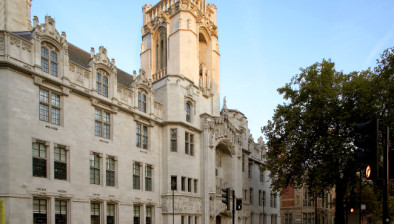Newspapers fail in appeal against libel actions as serious harm test is satisfied
News publishers who appealed over articles defamatory of a man in respect of his behaviour towards his former wife have had their appeal dismissed by justices in the Supreme Court on the basis the “serious harm” test was satisfied.
The Supreme Court unanimously dismissed the appeal, but for reasons different from those of the Court of Appeal. Lord Sumption gave the lead judgment, with which Lord Kerr, Lord Wilson, Lord Hodge and Lord Briggs agreed.
This appeal concerns the interpretation of section 1(1) of the Defamation Act 2013 (“the 2013 Act”), which is one of the principal new provisions. Section 1(1) provides: “(1) A statement is not defamatory unless its publication has caused or is likely to cause serious harm to the reputation of the claimant.”
The claimant, Bruno Lachaux, is a French aerospace engineer who at the relevant time lived with his British wife, Afsana, in the United Arab Emirates (“UAE”). The marriage broke down. In April 2011, he began divorce proceedings in the UAE courts and sought custody of their son, Louis. In March 2012, Afsana went into hiding with Louis in the UAE, claiming that she would not get a fair trial there. In August 2012, the UAE court awarded custody of Louis to his father. In October 2012, Mr Lachaux, having found out where Louis was, used the powers under the custody order to take Louis under his care, and subsequently initiated a criminal prosecution against Afsana for abduction. In January and February 2014, several British newspapers published articles making allegations about Mr Lachaux’s conduct towards Afsana during the marriage and in the course of the divorce and custody proceedings.
These appeals arise out of two libel actions begun by him in the High Court on 2 December 2014 against the publishers of the Independent and Evening Standard, and a third begun on 23 January 2015 against the publisher i. In February 2015, at a so-called ‘meaning hearing’ in the High Court, Mr Justice Eady held that the Independent and Evening Standard articles had eight and 12 defamatory meanings respectively. In summary, they were held to have meant (amongst other things) that Mr Lachaux had been violent and abusive towards his wife during their marriage, had hidden Louis’ passport to stop her removing him from the UAE, had made use of UAE law and the UAE courts to deprive her of custody and contact with her son, had callously and without justification taken Louis out of her possession, and then falsely accused her of abducting him.
The newspapers did not contest the primary facts relied on by Mr Lachaux in his Particulars of Claim. Instead, their case was that the statements in the articles were not defamatory because they did not meet the “serious harm” test under section 1(1) of the 2013 Act. In the High Court, Mr Justice Warby (“Warby J”) held that Mr Lachaux had demonstrated, by evidence, that the harm caused by the publications complained of was “serious”, within the meaning of section 1(1). The Court of Appeal dismissed the newspapers’ appeal, but focused instead on the inherent tendency of the words to damage Mr Lachaux’s reputation. The newspapers appeal to the Supreme Court against the finding of “serious harm”.
Reasons for the judgment
The law distinguishes between defamation actionable per se, which includes all libels and now two (previously four) special types of slander, and defamation actionable only on proof of special damage, which covers all other slanders. Pecuniary loss must be established for the latter category. Before the 2013 Act, two decisions (Jameel (Yousef) v Dow Jones & Co Inc [2005] QB 946 (CA) and Thornton v Telegraph Media Group Ltd [2011] 1 WLR 1985 (QB)) introduced the requirement that damage to reputation in defamation actionable per se must pass a minimum threshold of seriousness.
This Court considers that section 1 of the 2013 Act not only raises the threshold of seriousness from that in Jameel and Thornton, but requires its application to be determined by reference to the actual facts about its impact, not merely the meaning of the words. The reasons are as follows:
First, the 2013 Act undoubtedly amends the common law to some degree, so the least that section 1 achieved was to introduce a new threshold of serious harm which did not previously exist. If “serious harm” within the meaning of section 1(1) can be demonstrated only by reference to the inherent tendency of the words, no substantial change in the law would have been achieved. However, it is clear that section 1 was intended to make the significant amendment that the extent of damage is now part of the test for a defamatory statement.
Secondly, section 1 necessarily means that a statement which would previously have been regarded as defamatory, given its inherent tendency, is no longer actionable unless it “has caused or is likely to cause” harm which is “serious”. The words “has caused” refer to the consequences of the publication, specifically historic harm. This is a factual matter which must be established by reference to the impact of the statement. It depends on a combination of the inherent tendency of the words and their actual impact on the recipients. The words “likely” to be caused naturally refer to probable future harm. If past harm may be established as a fact, Parliament must have assumed that future harm could too.
Thirdly, section 1(1) must be read with section 1(2). Section 1(2) deals with how section 1(1) is to be applied to defamatory statements in relation to a body trading for profit. It adopts the “serious harm” requirement, but provides that for such a body the statement must have caused or be likely to cause “serious financial loss”. Thus, for trading bodies, the “financial loss” in section 1(2) is the measure of the “harm” referred to in section 1(1), not special damage as understood in the law of defamation. It must exceed the pre-2013 Act threshold of seriousness. This requires an actual impact analysis.
Lord Sumption does not accept that this interpretation of section 1 leads to any major inconsistency with section 8 (on limitation) or section 14 (on slanders actionable per se).
On the facts, the Supreme Court largely adopts Warby J’s legal approach. It finds no error in his “serious harm” finding. The finding was properly based on a combination of the meaning of the words, Mr Lachaux’s situation, the circumstances of publication and the inherent probabilities.









